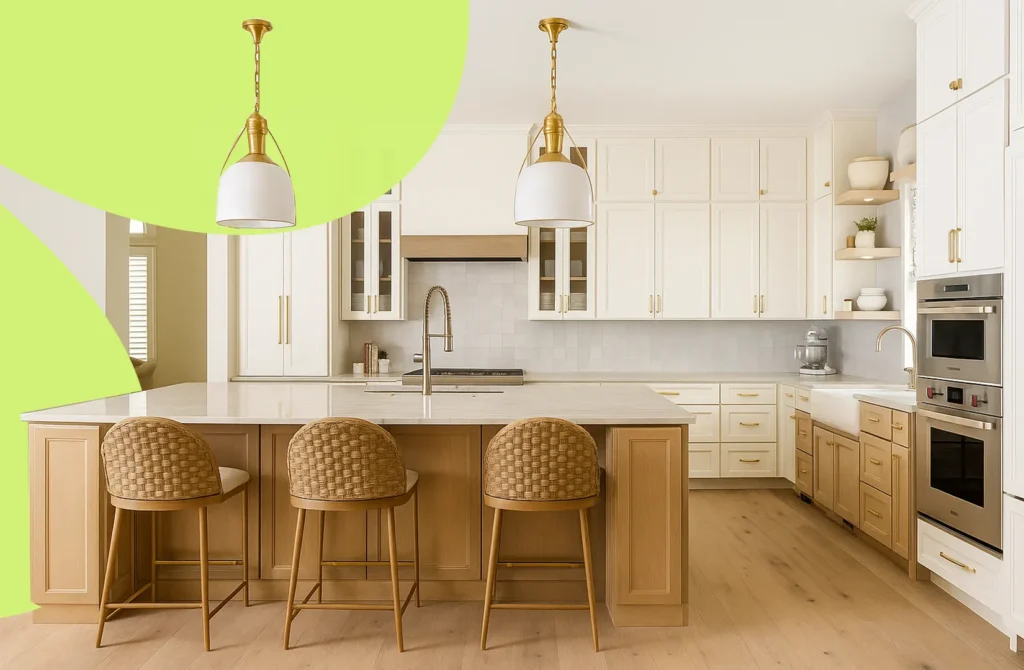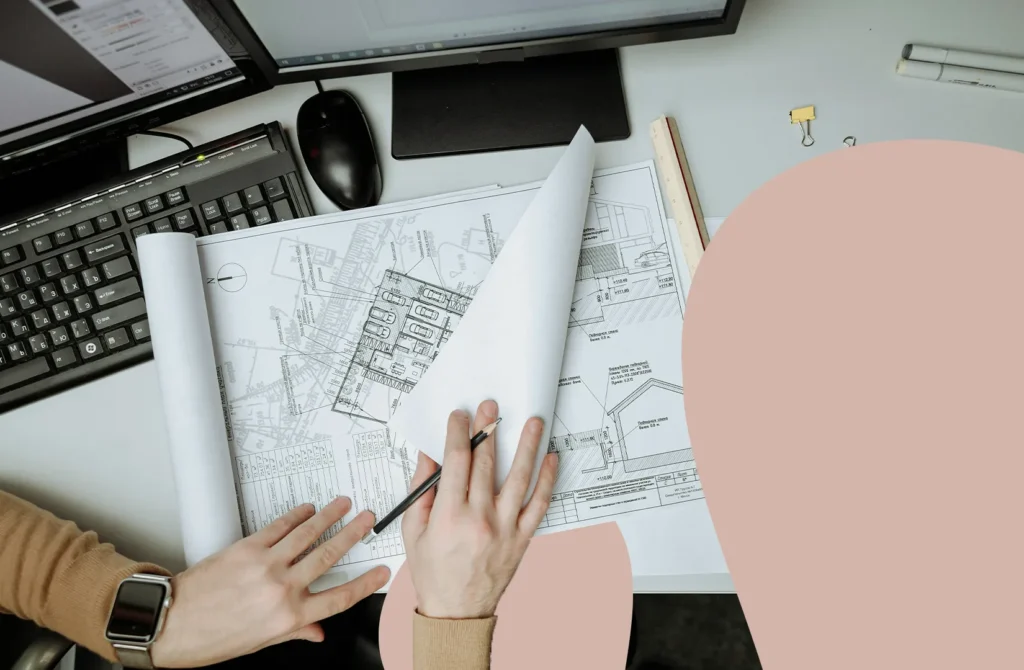Top Trends 2025 for Modern Home Builders
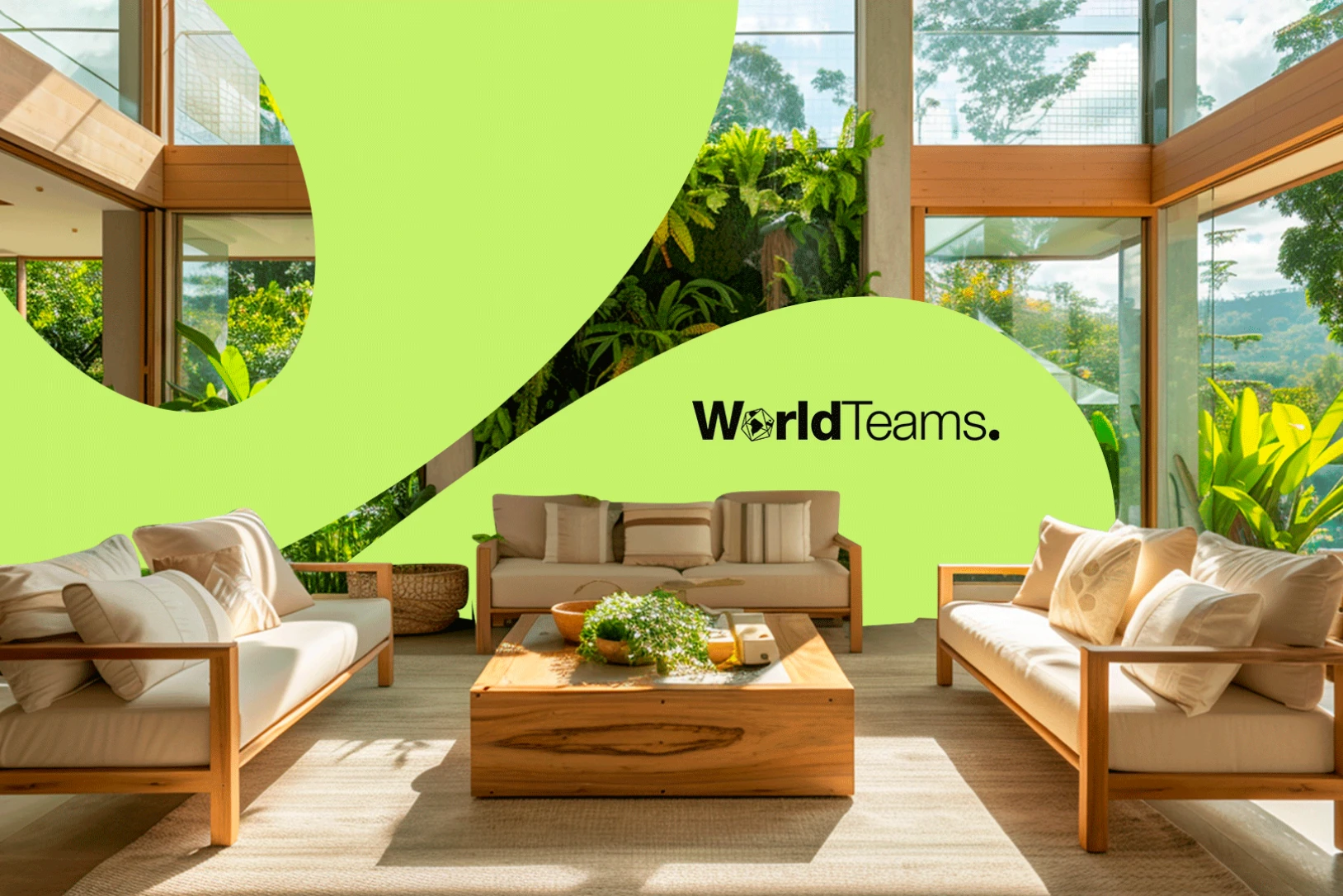
The home building industry is undergoing a transformation driven by innovation, sustainability, and increasing demand for customization. As we enter 2025, modern home builders must adapt to new trends that are redefining how homes are designed, built, and experienced. From smart technologies to sustainable materials, staying ahead of these trends is essential not only for staying competitive, but also for meeting the evolving expectations of homeowners.
In this article, we explore the top trends shaping the future of home building in 2025 and how embracing them can benefit your business. Whether you’re a custom builder, residential developer, or part of a larger construction firm, these insights will help you align your operations with the future of housing.
1. Smart Homes and Integrated Technology
Smart home technology is no longer a luxury; it has become a standard expectation. Homeowners are seeking fully connected homes that offer security, energy management, and convenience through automation. Builders are incorporating systems like voice-controlled lighting, smart thermostats, and AI-enabled home assistants to meet these needs.
For home builders, this trend means collaborating closely with technology providers and ensuring infrastructure is in place to support seamless smart home integration. Offering packages or customization options that include smart home features can be a key differentiator.
2. Energy Efficiency and Sustainable Materials
Eco-conscious buyers are pushing demand for green building practices. In 2025, sustainability is not just a trend — it’s a requirement. From solar panel integration to net-zero homes and high-efficiency HVAC systems, green living is influencing every part of the building process.
Sustainable materials like recycled steel, bamboo, and low-VOC paints are gaining popularity. Home builders need to source responsibly, minimize waste, and provide homes that perform well in both energy efficiency and environmental impact.
3. Modular and Prefabricated Construction
Modular and prefabricated building methods are revolutionizing how homes are constructed. These methods offer reduced timelines, lower labor costs, and improved quality control.
For modern home builders, incorporating prefab components can significantly streamline projects. As labor shortages persist and material prices fluctuate, modular construction offers predictability and efficiency.
4. Multi-Generational Living Spaces
An increasing number of families are opting for multi-generational living arrangements. Builders are now designing homes that include in-law suites, separate entrances, and shared communal areas to accommodate extended families comfortably.
Flexibility is key — homes need to be adaptable for both growing and aging families. This trend is creating demand for thoughtful architectural planning and functional space design.
5. Personalization and Custom Home Design
Homebuyers are looking for more than cookie-cutter designs. They want homes that reflect their lifestyle, taste, and values. Offering customization options — whether it’s layout, finishes, or smart features — has become essential.
Home builders can gain a competitive edge by offering design consultations, digital walkthroughs, and the ability to personalize each element of a home. This client-first approach not only increases satisfaction but also fosters trust and loyalty.
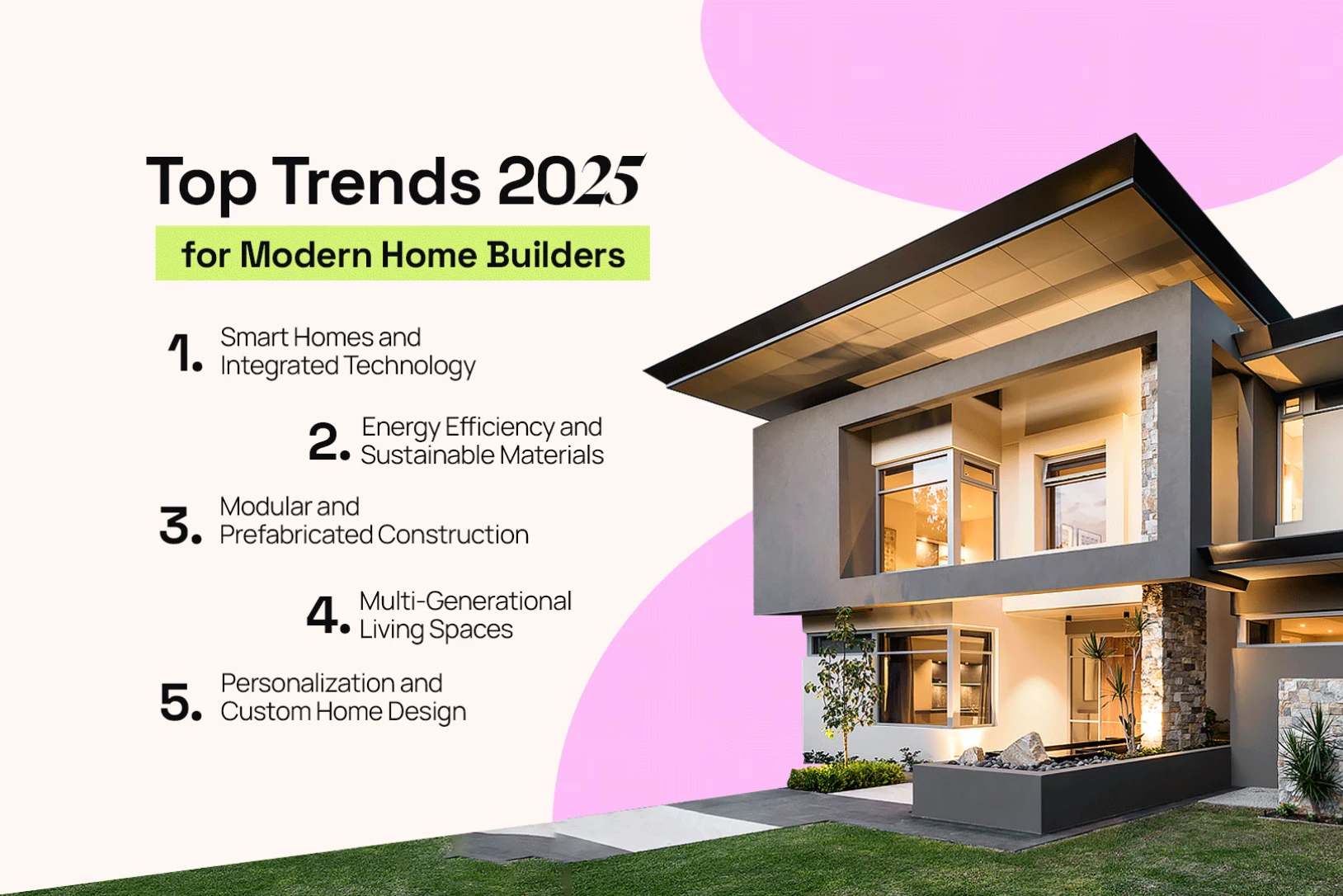
6. Outdoor Living and Biophilic Design
The pandemic has forever changed how people value outdoor spaces. Patios, rooftop decks, outdoor kitchens, and landscaped gardens are in high demand. Along with that, biophilic design — the integration of natural elements inside homes — is rising in popularity.
This trend presents an opportunity for builders to collaborate with landscape designers and integrate natural materials like wood and stone throughout the home.
7. 3D Printing and Innovative Construction Methods
Innovations like 3D printing in construction are gaining traction in 2025. These methods promise faster build times, lower costs, and reduced environmental impact. While still in early stages for residential construction, it’s a trend to watch and prepare for.
Builders exploring these technologies can position themselves as forward-thinking leaders in a competitive industry.

8. Wellness-Focused Architecture
Health and wellness are increasingly influencing home design. Builders are being asked to consider air quality, natural light, acoustics, and the use of non-toxic materials.
Designing for wellness also includes mental health aspects — creating calm, clutter-free spaces with access to nature and minimalistic aesthetics.
9. Data-Driven Design and Construction
The use of data and AI in the home building process is revolutionizing how projects are designed and managed. Tools like Building Information Modeling (BIM), predictive analytics, and virtual reality are enhancing accuracy and communication.
Builders that adopt data-driven methods benefit from reduced errors, better timelines, and improved customer satisfaction.
10. Architectural Outsourcing for Flexibility and Growth
One of the most strategic trends for 2025 is the rise in architectural outsourcing. As home builders face increasing pressure to deliver high-quality homes faster and at lower costs, many are turning to external partners for architectural design services and technical drafting.
Outsourcing architectural services provides access to global talent, cost savings, and the ability to scale operations without expanding internal teams. This approach allows home builders to focus on client relationships and project delivery while leveraging external experts for efficiency.
Whether you need help with architectural drawings, 3D renders, or BIM modeling, outsourcing can free up time and improve project outcomes.
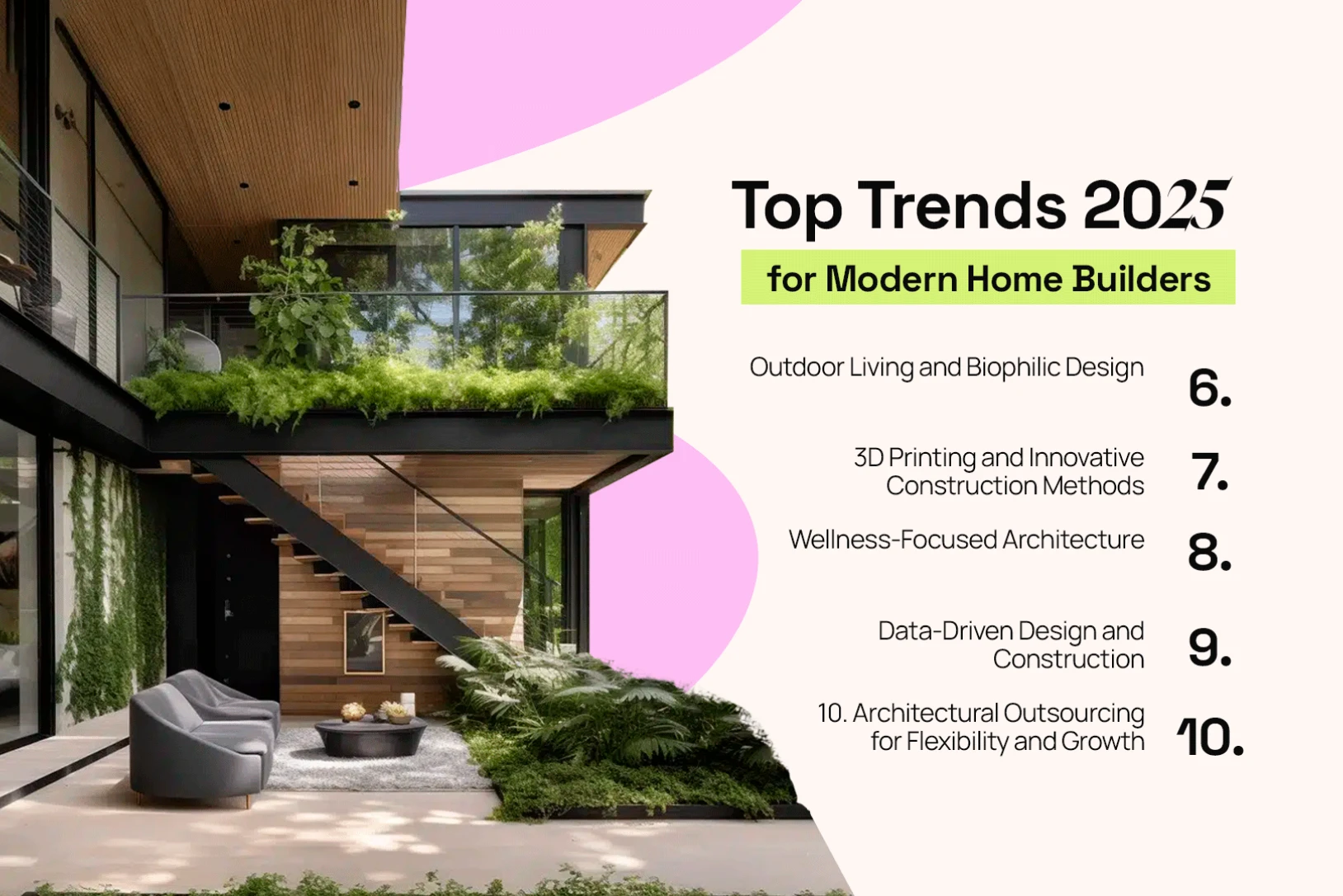
Partner with WorldTeams to Stay Ahead
At WorldTeams, we specialize in connecting modern home builders with top-tier talent in architecture and design. Whether you’re looking to outsource architectural services, scale your design team, or improve project timelines, we can help.
Our team understands the evolving needs of the construction industry and offers a flexible, cost-effective solution to access global professionals in real time. From architectural drawings and BIM models to visualizations and technical documentation, we deliver results that match your pace of growth.
Let’s build smarter together. Reach out today to discover how WorldTeams can become your strategic partner in home construction.








